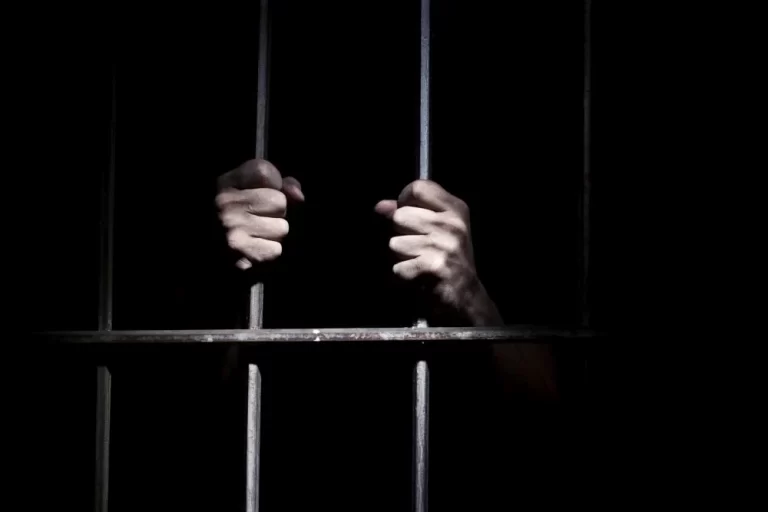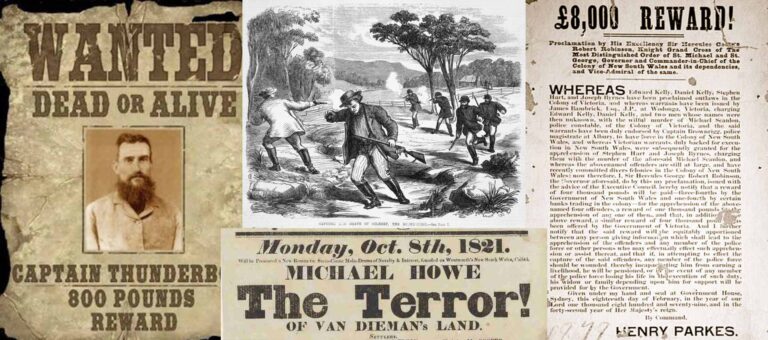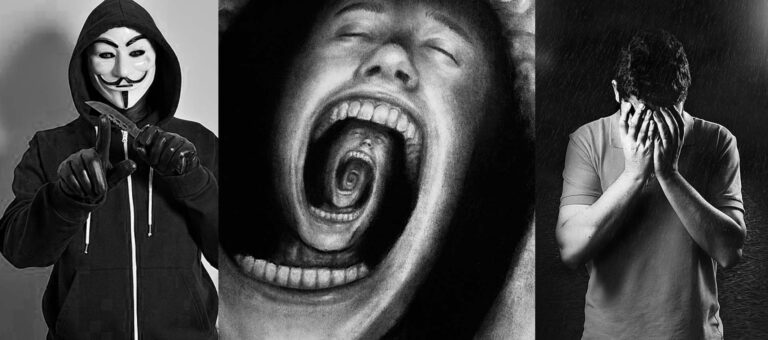The Ziggy Pohl Case
Table of Contents
Johann Pohl was a builder who had a number of building projects in Canberra and who employed subcontractors.
The Crown case against Johann Pohl was that on the morning of 9 March 1973, at Flat 2, Ground Floor, Corner of Booth and Atkinson Streets, Queanbeyan, NSW, that he strangled his wife between 9.30am and 9.45am. The claim was that he then concealed her body and kept various appointments establishing alibis for his movements. An essential part of the prosecution case was that the time of death was within a 15-minute period. Evidence of the time of death was given by Government Medical Officer, Dr Gillespie.
On 2 November 1973 he was found guilty by a jury and convicted in the Central Criminal Court, Sydney of maliciously murdering his wife, Kum Yee Pohl. He was sentenced to penal servitude for life.
On 2 August 1974 he appealed his conviction which was heard by McClemens, CJ at CL, Isaacs and Lee JJ and his appeal was dismissed.
Mr Pohl was released from gaol on licence on 25 February 1983. He was discharged from his licence on 24 February 1988.
On 10 July 1991 the Governor of New South Wales appointed a Judge of the Supreme Court to ‘inquire into doubts or questions as to the guilt of Johann Siegfried Earnst Pohl’.
On 1 May 1992 Justice McInerney reported on the conviction of Mr Pohl and recommended that he be granted a pardon.
On 17 December 1993 the Court of Criminal Appeal quashed the conviction of Mr Pohl and a judgement of acquittal was entered.
Confession of Guilt by Another
At about 8.30pm on 8 September 1990, Roger Graham Bawden, entered Queanbeyan Police Station and spoke to the officer in charge, Detective Sergeant Pulsford. Mr Bawden said:
Sergeant, I killed a woman here in Queanbeyan 16 or 17 years ago I’ve been living with it all this time and it’s been hell. I have been having nightmares every night and I’ve come up from Melbourne to confess to the murder. (Report of Inquiry, May 1992, p.1)
An inquiry was held into Mr Pohl’s conviction pursuant to s475 of the Crimes Act 1900. It was conducted by Justice P A McInerney who reported on 1 May 1992.
Justice McInerney considered the evidence of Bawden and determined that his account was reasonably consistent and that:
He asserted that on the day of the murder he had left his home in Cook to go to work at the Fairbairn RAAF base. He was anxious and depressed, mainly because of he need t obtain money. At some time that morning he formed an intention to break into a house and commit a robbery. He went to Booth Street, Queanbeyan, not knowing why, and, whilst driving past, saw the deceased in the garden. His accounts of the time that he was in the vicinity vary between 9 to 10.30am he parked his car around a corner in Atkinson Street, alighted from his car and, on a pretext, spoke to the deceased. He returned to his car, waited for a short period and then went back to the house but the deceased was not in sight. He went to the front door knocked and, when she answered, forced his way in. She screamed and he attacked her in the loungeroom. At the same time he slammed the door shut having noticed a dog barking and bounding across the road towards the front door. He struggles with the woman continued. He forced her to the floor of the loungeroom and, using a shirt, strangled her by twisting it around her throat. He then dragged her, still struggling, along the hall into the bathroom. He dragged or carried her body into the bedroom where he dropped it on the bed. He then placed the body of the deceased on the floor in the bedroom between the bedroom wall and the bed for the purpose of concealment. He tried to push the body half under the bed. He was feeling panicky and desperate and made what appears to have been a fairly desultory search for valuables taking a container of 50 cent coins from a cupboard and what he describes as a woman’s watch from a shelf on a divider at the end of the hall. He said he turned the gas on as he left the premises. (Inquiry, Report, Paragraph 7.3)
The evidence of Dr Gillespie, Government Medical Officer, about the time of death was tested at the inquiry and a report obtained from Professor Hilton, Associate Professor of Pathology, Sydney University, and Director of the NSW Institute of Forensic Medicine. Professor Hilton determined that death could have taken place one or two hours prior to 12.45pm at 10.45 or 11.45 am. His evidence was not supportive of Dr Gillespie’s claim that the time of death was between 9.30 and 9.45. Professor Hilton was supported in his evidence by Dr Oettle, Deputy Director of the NSW Institute of Forensic Medicine.
Reasons for Conviction
The evidence of the time of death was given by Dr Gillespie, Government Medical Officer, who made an examination of the body of Kum Yee Pohl at 12.45pm at the flat on 9 March 1973. He performed a post-mortem examination later that day.
The Crown claimed that Mr Pohl returned to his flat before midday to make it appear that his wife had been alive before he left the house and at a time shortly before he returned. Further, that he also performed household chores and altered the appearance of certain things in the house so as to indicate that there had been an intruder. Mr Pohl claimed that he discovered his wife’s body 15 to 20 minutes after returning to the flat shortly before noon. He discovered his wife lying on the floor between the bed and the wall of the bedroom and that this fact concealed her from his view. The Crown claimed that he arranged her clothing to indicate she had been sexually attacked. The Crown further claimed that this sexual assault was a fabrication. His wife’s mini skirt had been pulled up high on her body exposing her ‘lower part’ which was naked as her panties and pantyhose had been removed. The Crown went on to claim this appearance was false because ‘the medical evidence completely negatived any sexual assault’. (Regina v Johann Earnest Siegfried Pohl, Judgement, 2 August 1974, p.3). It is unclear how the evidence ‘negatived’ a sexual assault: however, Justice Isaacs said it could. Apparently both the Crown and Justice Isaacs were relying upon the evidence of the Government Medical Officer that ‘there was no sign of any damage around the genital or anal region’. (Regina v Johann Earnest Siegfried Pohl, Judgement, 2 August 1974, p.11)
Justice Isaacs made it clear that it was open for the jury to accept the evidence of the Government Medical Officer that the time of death was between 9.30 am and 9.45am. (Regina v Johann Earnest Siegfried Pohl, Judgement, 2 August 1974, pp.3-18). Dr Gillespie attempted to be precise about the time of death by considering lividity and body temperature.
The proposition accepted by the Court of Criminal Appeal and promoted by the Crown was that Mr Pohl returned to his home at about 9.30am, his wife was alive and after being in the house for a short time strangled her, leaving about 9.40am.
The acceptance of the time of death as between 9.30am and 9.45am meant there was a period of five minutes from an attack commencing and for strangulation to have occurred which would have allowed Mr Pohl to have strangled his wife at about 9.30am when he had returned home.
Justice Isaacs stated:
The jury was entitled to accept his evidence [Government medical Officer] and to fix the time of death as being between 9.30 and 9.45, and accepting his evidence that it would take 5 minutes from attack commencing for strangulation to death to conclude that the time of the attack was within 5 minutes of death and further they were entitled to accept that the appellant had first said to Detective Sergeant Murray, namely, that after going to Fyshwick he returned home at 9.30am, his wife was then alive and that after being in the house for about 10 minutes he then left at 9.40am. That, of course, would put him in the house at the time of her strangulation and death. (Regina v Johann Earnest Siegfried Pohl, Judgement, 2 August 1974, p.18)
At least for Justice Isaacs a possibility became beyond reasonable doubt, as it did for the jury who convicted Mr Pohl. Of importance was the unreliability of the Government Medical Officer and the Court accepting that they could put the time of death within a five minute to 10-minute period.
McClemens, CJ at CL and Lee J, stated that there was sufficient evidence for a finding of beyond reasonable doubt such that it excluded any other hypothesis consistent with innocence. He stated:
Suffice it for us to say that there is ample evidence to justify a finding of guilt beyond reasonable doubt to the exclusion of any other hypothesis, even if one does not draw adversely to the appellant all the inferences open on the evidence. (Regina v Johann Earnest Siegfried Pohl, Judgement, 2 August 1974, p. 1)
Justices McClemens and Lee went on to say something that is often claimed, but difficult to understand especially when the prosecution has to prove its case beyond reasonable doubt: ‘we concede that different minds may view certain of the facts in different ways and not draw some of the inferences to which his Honour has alluded’. (Regina v Johann Earnest Siegfried Pohl, Judgement, 2 August 1974, p.1) Justices McClemens and Lee was referring to the views of the trial judge when he made this comment.
Justice Isaacs commented on the trial judges’ conclusion in the following way:
Learned trial Judge in his report to this Court indicated that the case against the accused was based purely on circumstantial evidence as he had never confessed his guilt either in versions given to the police orally or in records of interview or in any statement he made to the court. But his Honour reported that in his view there was sufficient evidence to support the conviction if the jury drew the inferences which the Crown invited them to draw. At the conclusion of his report he added that he thought it proper to indicate to this Court that whilst he was of opinion that there was evidence before the jury upon which they could convict he personally did not regard the Crown case as being a strong one and that, indeed, he felt surprised at the jury’s verdict.
(Regina v Johann Earnest Siegfried Pohl, Judgement, 2 August 1974, p.2)
A difficulty for Mr Pohl was the suggestion that he had set a scene to show an intruder had caused the death. Part of this was damage to a door. Justice Isaacs noted that ‘the appellant ventured the opinion that the door must have been pushed open violently and banged against the corner of a chair in the loungeroom, which is shown in the sketch and which itself was tended in evidence’. (Regina v Johann Earnest Siegfried Pohl, Judgement, 2 August 1974 p.34). Of significance was the fact that the sister-in-law of the deceased, Margaret Pohl, had not seen the hole in the door (she visited for five minutes at 11.30am) which then led Justice Isaacs to conclude ‘when she inspected the door to see if it was open and she did not see it and the jury were entitled to accept her evidence that it was not there at the time and conclude that, if it was not there at that time it had come into existence between the time that she left the flat and the time the appellant said he discovered it’. (Regina v Johann Earnest Siegfried Pohl, Judgement, 2 August 1974, p.34)
Apart from the various times mentioned by Justice Isaacs his primary conclusion was:
The jury were entitled to say that it was impossible to conclude that she must have been alive at the time of his alleged return or could have been alive at that time because the doctor’s evidence which was open for them to accept and was uncontradicted, was that death resulted within 5 minutes of the strangulation in this case and that would mean that if she were breathing after he returned home her death would have been somewhere close to 12 o-clock in which event there would have been no signs of rigour mortis and the body would have been warm. The jury were entitled to conclude that the only rational inference was that it was the husband who did all these things after Mrs. Margaret Pohl had left and that there is no other rational hypothesis on the evidence pointing to anybody else.
Once it is accepted as the jury were entitled to accept, that the deceased met her death between 9.30 and 9.45a.m. then there is no rational or viable theory available upon the evidence of her being alive after then and certainly not after 11.30a.m. and in the house to perform the chores and make the changes if which Mrs. Pohl deposed or which are to be inferred from her evidence. (Regina v Johann Earnest Siegfried Pohl, Judgement, 2 August 1974, pp.40-41)
Strikingly, Justice Isaacs stated:
It is absurd to think that all of this work of some stranger different to the stranger who murdered the deceased between 9.30 and 9.45a.m. It must have been the same person for if it was some strange prowler that came in from the street the jury were entitled to ask themselves: “How would he know the importance, relevance and significance of making it appear that the deceased was alive after 9.30 – 9.45 or after about 11.30 and the particular significance of the very things that were done to indicate that she had performed these household chores after that time?”. How would such a strange prowler know the significance and importance of what was dome in the kitchen, namely, the washing up of the dishes and putting them away, the removal of the oven shelves from the sink on the draining board, emptying the sink, the opening fully from half open the oven door and the placing of the griller element on the flat oven door when so opened ?” . “How would he know the significance of turning off or on the rotisserie or of the putting of the radiator in the hall or putting a hole in the door”. “And if the 9.30 – 9.45 stranger hi the body how would another prowler after 11.30 know where to find her or even know it was hidden?”. (Regina v Johann Earnest Siegfried Pohl, Judgement, 2 August 1974, p.42)
Essentially what Justice Isaacs was saying was that the jury could have found guilt based upon the improbability of an intruder killing the deceased.
The trial judge was not as certain of Mr Pohl’s guilt. In his summing up he said:
There does not appear in the Crown case to be the slightest evidence, by direct evidence, of motive for the accused to kill his wife; not the slightest evidence by direct evidence. There appeared to all intents and purposes no reason at all why he should kill her. (Regina v Johann Earnest Siegfried Pohl, Judgement, 2 August 1974, p.89)
The trial judge went on to say that there was no evidence of a quarrel between Mr Pohl and his wife. He stated:
“If there is no sufficient evidence to conclude that he killed her, you could not imagine there was a quarrel and then say ‘Because we imagine there was a quarrel, therefore he killed her’. You would have to be very careful in the way you used that at all in the case. It would only be if the chain of circumstances apart from the letter indicated that he did do something … “
His Honour was referring to a letter where the deceased had complained about a lack of money.
Findings of Inquiry
Justice McInerney found, inter alia:
Having examined all the material presented in this inquiry, I have come to the conclusion that there must be a doubt about the conviction of Pohl for his wife’s murder on 9 March 1973. I am of the view that Bauwden’s confession is probably genuine. There is compelling evidence to substantiate this, although I concede there are some inconsistent aspects of his accounts given over the period since his initial confession to the police at Queanbeyan on 8 September 1990.
These inconsistencies, bearing in mind the time that has elapsed are not such, in my view, as to neutralise the compelling evidence in favour of the genuineness of the confession (Inquiry, Conclusions, p.74)
Of significance is the Summary of Conclusions and Recommendations, and how Justice McInerney justified the finding of guilt by the jury, and the decision of the Court of Criminal Appeal. He stated:
- The jury’s verdict, on the evidence before it at Pohl’s trial, was entirely justified. The decision of the Court of Criminal Appeal confirmed the jury’s decision. Had it not been for the confession of Bawden, no doubt would have arisen as to Pohl’s guilt.
It is probable that Mrs Pohl was murdered by Roger Graham Bawden.
It follows that there are substantial doubts as to Pohl’s guilt. I am satisfied that, had Bawden confessed before Pohl was charged, then Pohl would never have been charged with the offence. I am further satisfied that had the jury in Pohl’s trial been aware of Bawden’s existence and confession, acting reasonably, they would have entertained a reasonable doubt as to the guilt of Pohl. A conviction could not have been justified.
I recommend that Pohl be granted a pardon by Your Excellency. (Inquiry, Report, 1 May 1992)
Very little reference in the Inquiry Report is made to the role of the Government Medical Officer concerning his evidence about the time of death. Without his evidence putting the time of death between 9.30am and 9.45am, the Crown case would have been undermined and much of the speculative evidence against Mr Pohl would have evaporated.
In Mr Pohl’s case the Government Medical Officer’s finding about time of death was clearly wrong. When erroneous evidence is given by experts and it is a central part of the prosecution case, simply saying that a jury verdict was justified and could be supported by the Court of Criminal Appeal, is doing not much more than justifying a miscarriage of justice. The prosecution case is what should be considered, not a variety of possibilities that could be otherwise constructed. In Mr Pohl’s case the story created by the Crown was based on opportunity rather than direct evidence.
The Court of Criminal Appeal decision quashing the conviction of Mr Pohl was very brief. It included the following words:
There being an application by Mr Pohl to this Court for a quashing of his conviction, the Court has its own responsibility to consider the matter in the light of the evidence and information before it. Section 474J provides that:
“The mere fact that a free pardon has been granted does not entitle the person to whom the pardon has been granted to a quashing of the conviction.”
However, having regard to the concession of the Crown that it is appropriate for us to treat the report of McInerney J as evidence of the facts stated in it and that it is appropriate for us to give due weight to the assessment made by McInerney J of the reliability of Bawden’s confession, this is a relatively clear case in which the applicant is entitled to have his conviction quashed on the basis of new evidence, the new evidence being, in substance, Mr Bawden’s confession.
The Crimes (Appeal and Review) Act 2001 section 84 (2) reads the same as section 474J referred to by the Court.
Downloadable Content
R v Pohl (02.08.1974)
R v Pohl (17.12.1993)
Report of the Enquiry into the conviction of Johann Ernst Siefried Pohl May 1992






